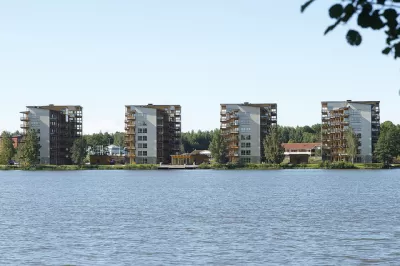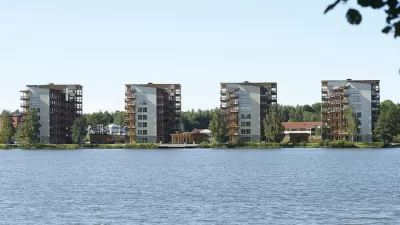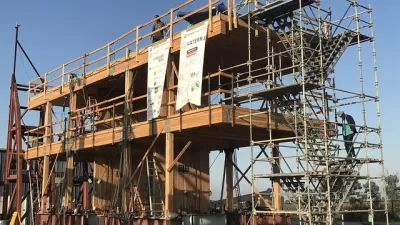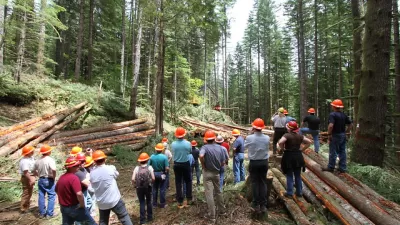Building with wood is back in fashion, but lumber producers have to reckon with thorny politics and new timber-based materials that have yet to be truly defined.

Matthew Messner reviews the history and politics of wood as a building material in a special timber issue of The Architect's Newspaper:
“Over the past 150 years, the process and politics of wood have shaped a highly efficient industry that still provides the vast majority of the U.S.’s house-building material. With new technology, wood is pushing into new territories, and the lumber industry is bracing to respond to these demands.”
Anyone following developments in the built environment has seen the re-rise of wood construction. Timber towers are going up in France, in England, and most recently, “an academic and professional collaboration” produced a timber-based design for the River Beech Tower in Chicago, in part because “it is lighter, more easily transportable and has a smaller environmental impact than its concrete or steel counterparts.”
“Although the lumber industry is confident it can handle an increase in demand,” Messner writes, “there are factors that will need to be addressed.” These include political maneuvering between the U.S. and Canada, updating fire codes, and establish legal definitions for new products like cross-laminated timber (“a true wonder material,” maybe).
FULL STORY: The lumber industry looks to respond to the rise of mass timber

Study: Maui’s Plan to Convert Vacation Rentals to Long-Term Housing Could Cause Nearly $1 Billion Economic Loss
The plan would reduce visitor accommodation by 25,% resulting in 1,900 jobs lost.

North Texas Transit Leaders Tout Benefits of TOD for Growing Region
At a summit focused on transit-oriented development, policymakers discussed how North Texas’ expanded light rail system can serve as a tool for economic growth.

Using Old Oil and Gas Wells for Green Energy Storage
Penn State researchers have found that repurposing abandoned oil and gas wells for geothermal-assisted compressed-air energy storage can boost efficiency, reduce environmental risks, and support clean energy and job transitions.

Private Donations Propel Early Restoration of Palisades Playground
Los Angeles has secured over $1.3 million in private funding to restore the Pacific Palisades playground months ahead of schedule, creating a modern, accessible space that supports community healing after recent wildfires.

From Blight to Benefit: Early Results From California’s Equitable Cleanup Program
The Equitable Community Revitalization Grant (ECRG) program is reshaping brownfield redevelopment by prioritizing projects in low-income and environmental justice communities, emphasizing equity, transparency, and community benefits.

Planting Relief: Tackling Las Vegas Heat One Tree at a Time
Nevada Plants, a Las Vegas-based nonprofit, is combating the city’s extreme urban heat by giving away trees to residents in underserved neighborhoods, promoting shade, sustainability, and community health.
Urban Design for Planners 1: Software Tools
This six-course series explores essential urban design concepts using open source software and equips planners with the tools they need to participate fully in the urban design process.
Planning for Universal Design
Learn the tools for implementing Universal Design in planning regulations.
Ascent Environmental
Borough of Carlisle
Institute for Housing and Urban Development Studies (IHS)
City of Grandview
Harvard GSD Executive Education
Toledo-Lucas County Plan Commissions
Salt Lake City
NYU Wagner Graduate School of Public Service





























